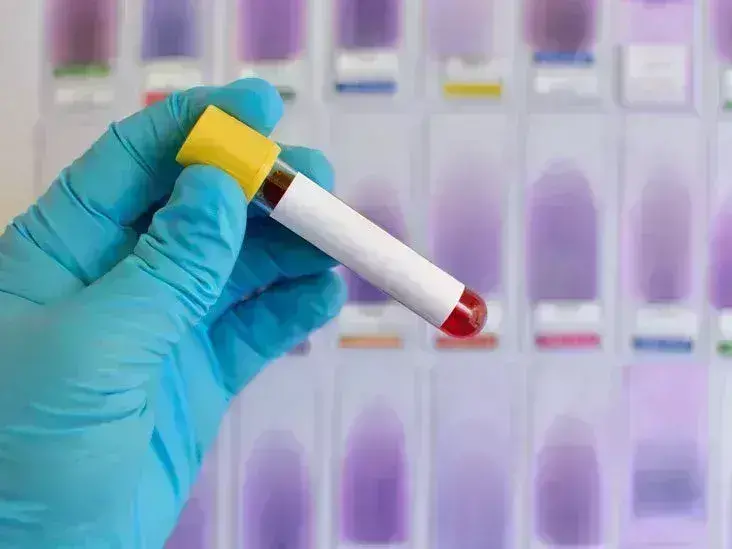- Home
- Medical news & Guidelines
- Anesthesiology
- Cardiology and CTVS
- Critical Care
- Dentistry
- Dermatology
- Diabetes and Endocrinology
- ENT
- Gastroenterology
- Medicine
- Nephrology
- Neurology
- Obstretics-Gynaecology
- Oncology
- Ophthalmology
- Orthopaedics
- Pediatrics-Neonatology
- Psychiatry
- Pulmonology
- Radiology
- Surgery
- Urology
- Laboratory Medicine
- Diet
- Nursing
- Paramedical
- Physiotherapy
- Health news
- Fact Check
- Bone Health Fact Check
- Brain Health Fact Check
- Cancer Related Fact Check
- Child Care Fact Check
- Dental and oral health fact check
- Diabetes and metabolic health fact check
- Diet and Nutrition Fact Check
- Eye and ENT Care Fact Check
- Fitness fact check
- Gut health fact check
- Heart health fact check
- Kidney health fact check
- Medical education fact check
- Men's health fact check
- Respiratory fact check
- Skin and hair care fact check
- Vaccine and Immunization fact check
- Women's health fact check
- AYUSH
- State News
- Andaman and Nicobar Islands
- Andhra Pradesh
- Arunachal Pradesh
- Assam
- Bihar
- Chandigarh
- Chattisgarh
- Dadra and Nagar Haveli
- Daman and Diu
- Delhi
- Goa
- Gujarat
- Haryana
- Himachal Pradesh
- Jammu & Kashmir
- Jharkhand
- Karnataka
- Kerala
- Ladakh
- Lakshadweep
- Madhya Pradesh
- Maharashtra
- Manipur
- Meghalaya
- Mizoram
- Nagaland
- Odisha
- Puducherry
- Punjab
- Rajasthan
- Sikkim
- Tamil Nadu
- Telangana
- Tripura
- Uttar Pradesh
- Uttrakhand
- West Bengal
- Medical Education
- Industry
HMGB-1 additional blood test to distinguish Periprosthetic Joint Infection & Aseptic Loosening in TKAs

Ibrahim Halil Rizvanoglu et al conducted a study to investigate the efficiency of High Mobility Group Box-1 protein (HMGB-1) in differentiation of asymptomatic knee prosthesis, and periprosthetic joint infection (PJI) and aseptic loosening (AL) causing painful knee prosthesis.
High mobility group box-1 (HMGB-1) is a member of the alarmin group of cellular messaging proteins that functions as an extracellular signaling molecule by being passively secreted from necrosis cells and actively secreted from cells playing a role in inflammation. HMGB-1 acts as a pro-inflammatory cytokine and a late inflammatory factor in inflammatory processes.
The data of patients who consulted the author’s clinic for checking after total knee arthroplasty surgery were recorded prospectively. Blood levels of CRP, ESR, WBC, and HMGB-1 were recorded.
Blood samples were collected in EDTA coated vacutainer bottles, and centrifuged for 15 min at 1000 g within 1 h of collection. The resulting sera were aliquoted into microtubes and immediately frozen at − 80 °C. These samples were placed into a refrigerator at 4 °C one night before the measurements. Serum samples were kept at room temperature for 2 h before operating with the ELISA method. The samples were then mixed using vortex and measurement procedures were applied.
Patients whose examination and routine tests were within normal limits comprised group I, asymptomatic total knee arthroplasty (ATKA). Painful patients with abnormal test results underwent three phase bone scintigraphy for further investigation Patients with periprosthetic joint infection (PJI) and aseptic loosening (AL) according to scintigraphy comprised group II and group III, respectively. The mean values of HMGB-1 and cut-off values according to the groups and their correlations with other inflammatory parameters were determined.
Key findings of the study were:
• 73 patients were included in the study. Group I (n = 25), including ATKA patients, was considered the control group. Group II (n = 22) comprised the patients diagnosed with PJI, and Group III (n = 26) comprised the patients diagnosed with AL. The distribution of the patients to the groups was similar in terms of age, sex, and operated knee side.
• Significant differences were observed in three groups, in terms of CRP, ESR, WBC, and HMGB-1.
• The cut-off value of HMGB-1 was determined as 15.16 ng/ml between ATKA and PJI, 16.92 ng/ml between ATKA and AL, and 27.87 ng/ml between PJI and AL, respectively.
• The sensitivity and specificity of HMGB-1 in
Differentiation of ATKA and PJI were 91%, 88%, and
Differentiation of ATKA and AL were 91%, 96%, and
Differentiation of PJI and AL were 81%, 73%.
The authors concluded that – “HMGB-1 may be utilized as an additional blood test even if not alone in the differential diagnosis of problematic knee prosthesis patients. When multicenter studies with larger patient samples are conducted, the role and importance of this marker in diagnosis may increase.”
Further reading:
HMGB-1 Levels in Painful Knee Arthroplasty: Is it Possible to Distingue Periprosthetic Joint Infection and Aseptic Loosening?
İbrahim Halil Rızvanoglu et al
Indian Journal of Orthopaedics (2023) 57:1023–1031
https://doi.org/10.1007/s43465-023-00903-9
MBBS, Dip. Ortho, DNB ortho, MNAMS
Dr Supreeth D R (MBBS, Dip. Ortho, DNB ortho, MNAMS) is a practicing orthopedician with interest in medical research and publishing articles. He completed MBBS from mysore medical college, dip ortho from Trivandrum medical college and sec. DNB from Manipal Hospital, Bengaluru. He has expirence of 7years in the field of orthopedics. He has presented scientific papers & posters in various state, national and international conferences. His interest in writing articles lead the way to join medical dialogues. He can be contacted at editorial@medicaldialogues.in.
Dr Kamal Kant Kohli-MBBS, DTCD- a chest specialist with more than 30 years of practice and a flair for writing clinical articles, Dr Kamal Kant Kohli joined Medical Dialogues as a Chief Editor of Medical News. Besides writing articles, as an editor, he proofreads and verifies all the medical content published on Medical Dialogues including those coming from journals, studies,medical conferences,guidelines etc. Email: drkohli@medicaldialogues.in. Contact no. 011-43720751


